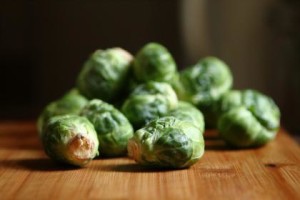How to Prepare Your Garden for a Second Harvest Season
 The hot summer temperatures are ripening tomatoes and helping deliver bumper crops of cucumber, squash, corn and beans. But all your work prepping your garden doesn’t have to stop giving a return on your investment with summer’s end. Without much work at all, you can prepare your garden right now to yield more nutritious goodness in September, October and even November. When you realize how easy it will be to continue harvesting, you’ll be wanting to get busy prepping for a second growing season.
The hot summer temperatures are ripening tomatoes and helping deliver bumper crops of cucumber, squash, corn and beans. But all your work prepping your garden doesn’t have to stop giving a return on your investment with summer’s end. Without much work at all, you can prepare your garden right now to yield more nutritious goodness in September, October and even November. When you realize how easy it will be to continue harvesting, you’ll be wanting to get busy prepping for a second growing season.
It’s So Easy
Since you likely did the hard labor of tilling, composting and weeding prior to summer, you won’t have to do any of that to get your fall vegetables in the ground. If you have some large-leaf veggies growing right now, they can provide the ideal shade spot for new fall seedlings to get their start. Just loosen a bit of earth (down to about five inches) in the shade of existing plants and you’ll be good to go. Your existing plants are well-established so you won’t do them harm by disturbing the soil.
Of course, you could grow your fall plants in flats until they are ready for transplant. This course of action is good insofar as you will be able to keep the soil appropriately moist and climate controlled. Once fall plants boast a couple of mature-sized leaves, they are ready to be transplanted. Again, no need to do a bunch of work to prepare your garden. Just intersperse your seedlings among your existing plants. It certainly won’t hurt to make sure the soil is loose all around or to mix in a helping of nutrient-loaded compost, but all the heavy lifting was done this spring before you planted the summer garden.
It’s So Delicious
Fall vegetables are truly delicious and so good for you. To figure out which autumn veggies you want to plant, look at days to maturity. Most fall vegetables will need from 30-90 days to produce. Find out when your area is vulnerable to its first hard freeze and then count backward to the appropriate planting date. You’ll want a mature plant prior to the area’s plant-killing first frost.
The good news is that fall produce actually tastes better when it matures in cooler temperatures. You have plenty of time, if you start now, to ensure hearty goodness this fall. Radishes, for instance, take just 30 days from start to finish. They could go in the ground fairly late in the game. Beets, cabbage and brussel sprouts take longer (90-95 days) so those are plants you’ll want to start putting in the soil earlier. Here are some other fall veggies and their grow
Arugula and spinach – 45 days
Turnips, lettuce and chard – 50-55 days
Kale and kohlrabi – 60 days
Rutabaga and cauliflower – 75 days
Carrots – 80 days
It’s So Manageable
The first time you plant a fall garden may feel intimidating, but once you do it you’ll find that it’s a great and easy way to extend the life of your garden. When mixing seedlings in with mature existing plants you can keep the garden manageable by using Kincaid Plant Markers. Plant markers readily identify each vegetable. You could even stake out spots for the quick-growing crops now and plant later. Markers keep your garden manageable and harvesting enjoyable. With a little effort to prepare your garden now, you can be enjoying root vegetables all fall.
